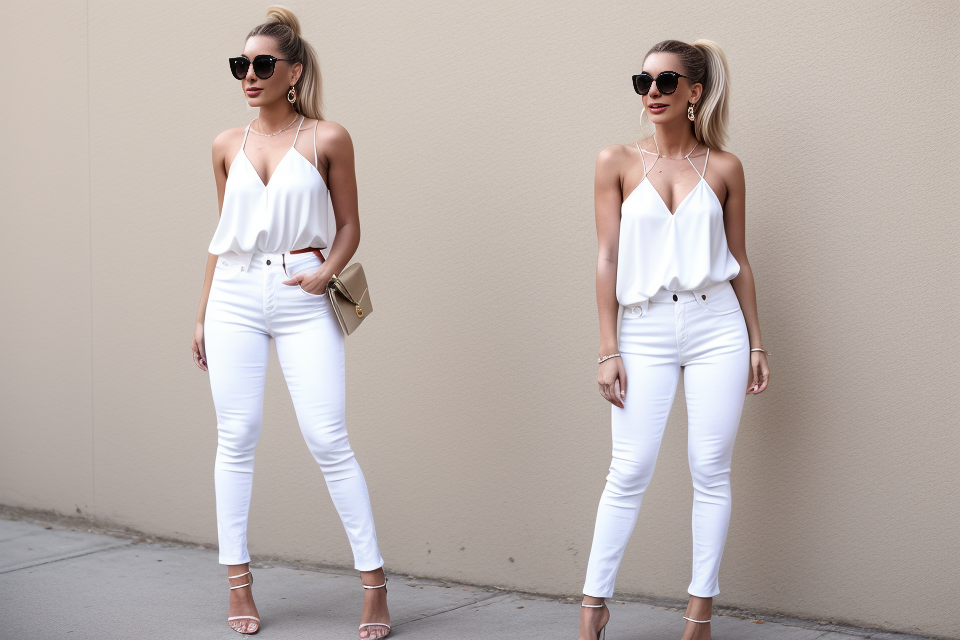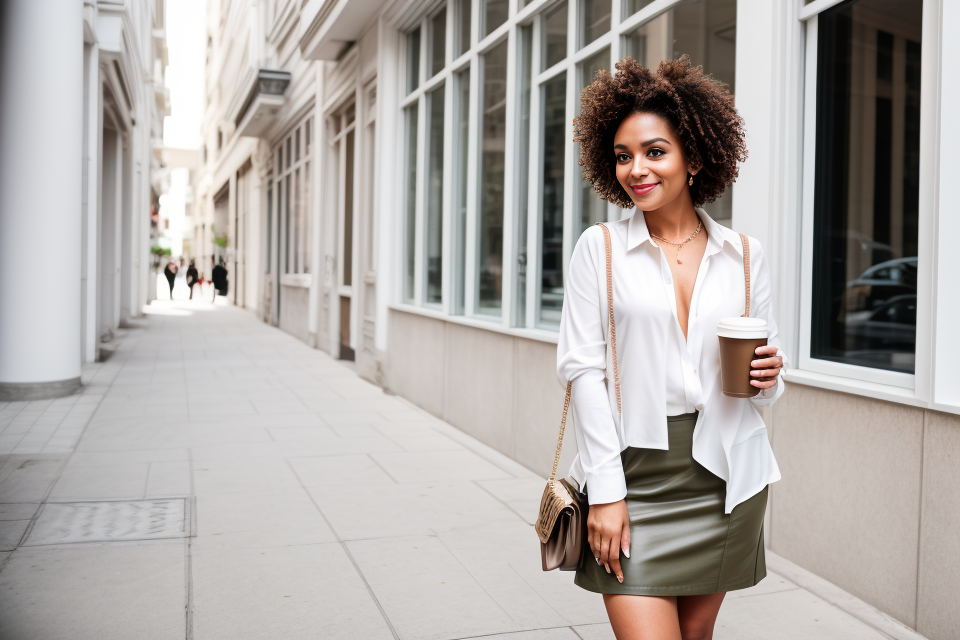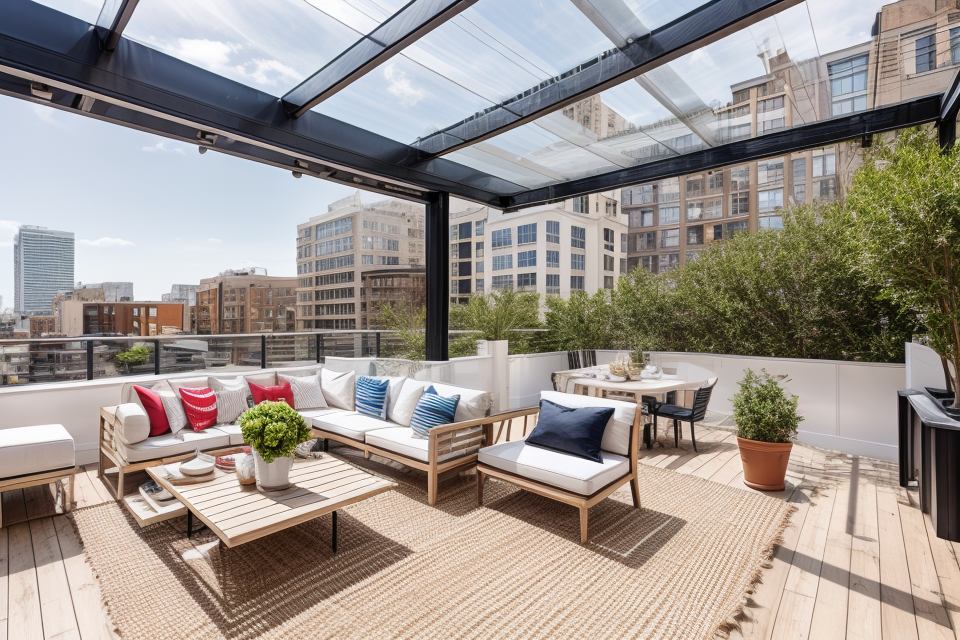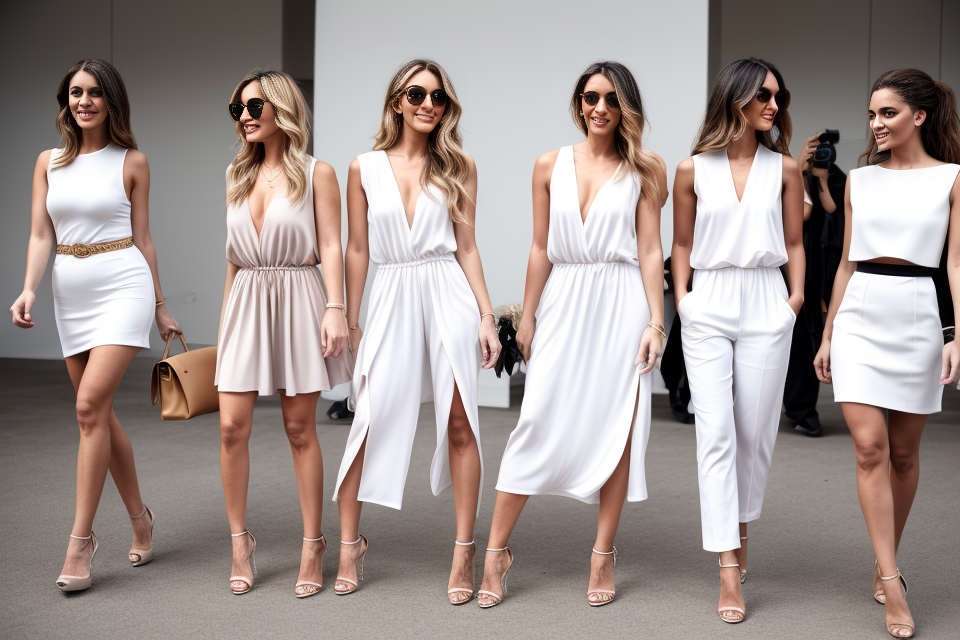
Choosing the right outfit can be a daunting task, especially when you have a busy schedule and limited time to get ready. However, with a few essential tips and tricks, you can effortlessly choose the perfect outfit every time. In this article, we will discuss the key factors to consider when selecting an outfit, such as the occasion, your body shape, and your personal style. We will also provide practical advice on how to build a versatile wardrobe and how to accessorize your outfits to make them look even more stylish. By following these simple guidelines, you will be able to confidently choose outfits that make you feel and look your best, every time.
Mastering the Art of Dressing for Every Occasion
Identifying the Event and Dress Code
Understanding the context of the event
Before selecting an outfit, it is crucial to comprehend the purpose and nature of the event. Whether it’s a formal dinner, a casual gathering, or a business meeting, knowing the context will help you make appropriate fashion choices. Consider the following aspects:
- The theme or motif of the event
- The time of day and duration of the event
- The location and setting of the event
- The purpose and expected behavior at the event
Deciphering dress codes: formal, casual, business casual, and cocktail attire
Dress codes are often used to indicate the appropriate level of dressiness for an event. Understanding these codes can save you from making embarrassing fashion mistakes. Here’s a breakdown of common dress codes:
- Formal: This dress code typically requires formal wear, such as evening gowns, tuxedos, or black tie for men. Formal events include weddings, galas, and formal dinners.
- Casual: A casual dress code allows for more relaxed attire, such as jeans, T-shirts, and blouses. Casual events can include backyard barbecues, picnics, and beach gatherings.
- Business Casual: This dress code strikes a balance between professional and casual attire. It’s often seen in office settings or professional events that require a slightly more relaxed dress code. Examples of business casual attire include dress pants, nice tops, blazers, and dressy shoes.
- Cocktail Attire: Cocktail attire is semi-formal and often includes attire such as dresses, dress pants, or nice suits. It’s suitable for events like weddings, cocktail parties, or other semi-formal gatherings.
Researching the venue and its expected dress style
If you’re still unsure about the dress code, research the venue and its expected dress style. Look at photos of past events held at the same location or visit the venue’s website for dress code recommendations. Additionally, you can reach out to the event host or organizers for clarification on the dress code.
By taking the time to understand the context of the event and decipher the dress code, you’ll be well on your way to choosing the perfect outfit every time.
Knowing Your Body Type and Personal Style
- Understanding the basics of body type
- Identifying your body shape and features
- Embrace your unique style
- Invest in quality, versatile, and flattering clothing
One of the essential steps in dressing for every occasion is knowing your body type and personal style. This involves understanding the basics of body type, identifying your body shape and features, embracing your unique style, and investing in quality, versatile, and flattering clothing.
Understanding the basics of body type
Before you can dress for every occasion, it’s crucial to understand the basics of body type. There are three main body types: ectomorph, mesomorph, and endomorph. Ectomorphs are naturally thin with little body fat, mesomorphs have a muscular and athletic build, and endomorphs are naturally curvy or round. Understanding your body type can help you choose clothing that flatters your shape and accentuates your best features.
Identifying your body shape and features
Once you know your body type, it’s time to identify your body shape and features. This involves taking a close look at your body and noting down your measurements, such as your bust, waist, and hip measurements. It’s also important to note down your body shape, such as apple, pear, hourglass, or rectangular. This information will help you choose clothing that fits you well and accentuates your best features.
Embrace your unique style
Embracing your unique style is crucial in dressing for every occasion. Your style should reflect your personality and make you feel confident and comfortable. It’s important to experiment with different styles and find what works best for you. This might involve trying out different colors, patterns, and cuts until you find what flatters your body shape and personal style.
Invest in quality, versatile, and flattering clothing
Investing in quality, versatile, and flattering clothing is key to dressing for every occasion. This means choosing clothing made from high-quality materials that are durable and long-lasting. It’s also important to invest in versatile pieces that can be dressed up or down for different occasions. Additionally, choose clothing that flatters your body shape and personal style, such as pieces that highlight your best features and make you feel confident and comfortable.
By following these tips, you can effortlessly choose the perfect outfit every time and dress for every occasion with confidence and style.
Creating a Capsule Wardrobe
Creating a capsule wardrobe involves paring down your closet to the essential pieces that can be mixed and matched to create multiple outfits. This approach simplifies the process of getting dressed, saves time and effort, and helps reduce clutter.
To create a capsule wardrobe, start by assessing your current wardrobe and identifying the pieces that you wear most frequently. These are the items that should form the basis of your capsule wardrobe. Aim to have a balance of timeless, versatile pieces that can be dressed up or down for different occasions.
When choosing the pieces for your capsule wardrobe, focus on quality over quantity. Invest in well-made, classic pieces that will last for years to come. Look for materials that are durable, easy to care for, and flattering to your body shape.
In addition to the essential pieces, consider accessorizing with items that complement your style. Accessories can add personality and flair to your outfits, while also helping to tie together different pieces. Choose accessories that are versatile and can be worn with multiple outfits to get the most out of your wardrobe.
Once you have your capsule wardrobe, take the time to experiment with different combinations and learn how to mix and match different pieces. This will help you become more confident in your style and make it easier to put together outfits quickly and effortlessly.
Building a Confidence-Boosting Wardrobe
Choosing Colors That Suit Your Skin Tone
When it comes to choosing colors for your outfits, it’s important to consider your skin tone. Wearing colors that complement your skin tone can help you look healthier, more rested, and generally more put-together. Here are some tips for choosing colors that suit your skin tone:
Understanding color theory
Before we dive into specific colors, it’s important to understand the basics of color theory. The color of your skin can be classified as warm or cool, depending on whether it tends towards yellow or blue-gray. This can help you determine which colors will look best on you.
Identifying colors that complement your skin tone
Once you know whether your skin is warm or cool, you can start to identify colors that will complement it. For example, if you have warm skin, look for colors that contain yellow or orange, such as pumpkin, mustard, or coral. If you have cool skin, look for colors that contain blue or purple, such as navy, lavender, or plum.
Incorporating color into your outfits
When choosing colors for your outfits, try to incorporate a pop of color with a scarf, handbag, or shoes. This can help you stand out and add interest to your outfit without being overwhelming.
It’s also important to consider the occasion and the time of day when choosing colors. For example, bright colors can be energizing during the day, but they may be too loud for a formal evening event.
Remember, there are no hard and fast rules when it comes to choosing colors. The most important thing is to feel confident and comfortable in what you’re wearing. Experiment with different colors and styles until you find what works best for you.
Selecting the Right Fabrics for Comfort and Appearance
Choosing the right fabrics for your outfits is crucial in creating a wardrobe that not only looks good but also feels comfortable to wear. By selecting fabrics that suit your personal preferences and the occasion, you can ensure that you always feel confident and stylish. Here are some tips to help you select the right fabrics for comfort and appearance:
- Choosing fabrics based on occasion and personal preferences: Consider the occasion and your personal preferences when choosing fabrics. For example, lightweight and breathable fabrics like cotton or linen are perfect for casual settings, while heavier fabrics like wool or tweed are better suited for formal events.
- Considering factors such as breathability, durability, and wrinkle resistance: When selecting fabrics, consider factors such as breathability, durability, and wrinkle resistance. Breathable fabrics like cotton and linen are ideal for warm weather, while durable fabrics like denim and corduroy are perfect for everyday wear. Wrinkle-resistant fabrics like silk and synthetic blends are great for travel or for those who lead an active lifestyle.
- Caring for your clothes to maintain their appearance: Proper care and maintenance can help extend the life of your clothes and keep them looking their best. Always follow the care instructions on the label, and consider investing in professional cleaning for delicate or special-care items.
By taking these factors into account, you can build a wardrobe that not only looks great but also feels comfortable and stylish.
Developing a Sense of Style
Experimenting with Different Styles
One of the key steps in developing a sense of style is to experiment with different fashion styles. This can involve trying out different clothing items, such as dresses, tops, pants, and accessories, to see what flatters your body shape and personal taste. You can also try out different fashion styles, such as bohemian, preppy, or edgy, to see which one best suits your personality and lifestyle.
Finding Inspiration from Fashion Icons and Influencers
Another way to develop a sense of style is to find inspiration from fashion icons and influencers. This can involve looking at the styles of celebrities, models, and fashion bloggers to see what they are wearing and how they are putting their outfits together. You can also follow fashion influencers on social media to stay up-to-date on the latest fashion trends and to get ideas for your own outfits.
Developing Your Own Unique Style
Ultimately, the goal of developing a sense of style is to create a wardrobe that reflects your personal taste and individuality. This means finding a balance between following fashion trends and expressing your own unique style. It’s important to remember that there is no one “right” way to dress, and that the most important thing is to feel confident and comfortable in your own clothes. By experimenting with different styles, finding inspiration from fashion icons and influencers, and developing your own unique sense of style, you can build a wardrobe that makes you feel confident and stylish every day.
Streamlining Your Morning Routine
Planning Your Outfits in Advance
Assessing Your Schedule and Events
One of the most crucial steps in planning your outfits in advance is to assess your schedule and events for the day. By knowing what activities you have planned, you can determine the appropriate attire that will be suitable for each occasion. This includes considering factors such as the dress code, weather, and physical activities that you will be engaged in.
Choosing Outfits the Night Before or Early in the Morning
Once you have assessed your schedule and events, the next step is to choose your outfits. It is recommended to do this the night before or early in the morning, so you have enough time to make any necessary adjustments or changes. This will also help you avoid last-minute rushing and stress, allowing you to start your day in a more relaxed and organized manner.
Packing Work and Travel Outfits Efficiently
Packing your work and travel outfits efficiently is also essential when planning your outfits in advance. By organizing your clothes in a neat and orderly fashion, you can easily access the items you need and avoid confusion and chaos when getting ready in the morning. It is also helpful to consider packing items that can be mixed and matched, such as neutral-colored tops and bottoms, to create a variety of outfit combinations.
By following these tips, you can effortlessly choose the perfect outfit every time and streamline your morning routine.
Accessorizing Smartly
Accessorizing your outfits can elevate your look and complete your ensemble. Here are some tips on how to accessorize smartly:
- Choosing accessories that complement your outfits: Your accessories should complement your outfit, not overpower it. For example, if you’re wearing a statement necklace, keep the rest of your accessories simple.
- Investing in quality, versatile accessories: Invest in high-quality, versatile accessories that can be worn with multiple outfits. A classic watch, a pair of diamond studs, or a leather handbag are great examples of versatile accessories.
- Experimenting with different styles and trends: Don’t be afraid to experiment with different styles and trends. Accessorizing with trendy pieces can add a fun and playful element to your outfit. Just make sure to pair them with classic pieces to keep your look balanced.
Grooming and Presentation
Developing a Grooming Routine
One of the keys to effortlessly choosing the perfect outfit every time is by developing a grooming routine. This involves establishing a set of personal grooming habits that will help you to look and feel your best. To develop a grooming routine, start by determining how much time you have each morning, and then create a schedule that includes time for showering, shaving, brushing your teeth, and applying moisturizer.
Ensuring Personal Hygiene
Ensuring personal hygiene is another important aspect of grooming and presentation. This involves keeping yourself clean and healthy, both physically and mentally. Make sure to wash your hands regularly, take a shower or bath daily, and wear clean clothes. Additionally, it’s essential to maintain good oral hygiene by brushing your teeth at least twice a day and flossing once a day.
Paying Attention to Details
Paying attention to details such as shoes, hair, and makeup is also crucial when it comes to grooming and presentation. For instance, make sure your shoes are clean and well-polished, and that your hair is styled in a way that complements your outfit. Similarly, ensure that your makeup is applied correctly and is not too heavy or light. These small details can make a big difference in how you look and feel, and can help you to effortlessly choose the perfect outfit every time.
Boosting Your Confidence and Enjoying the Process
Trusting Your Choices
When it comes to choosing the perfect outfit, it’s important to trust your own fashion instincts. This means being confident in your ability to make decisions about what looks good on you and what doesn’t.
Here are some tips for learning to trust your choices:
- Avoid comparison: It’s easy to get caught up in comparing yourself to others and worrying about what other people think. But the truth is, everyone has their own unique style and there’s no one “right” way to dress. So, try to focus on what makes you feel good and confident, rather than worrying about what other people might think.
- Stay true to yourself: Your personal style is a reflection of who you are and what makes you feel comfortable and confident. So, it’s important to stay true to yourself and not try to conform to any particular trend or fashion standard.
- Recognize that there is no perfect outfit for everyone: Everyone has different body types, styles, and preferences. So, it’s important to remember that there’s no one outfit that will look good on everyone. Instead, focus on finding pieces that flatter your figure and make you feel confident and put together.
By learning to trust your own fashion instincts, you’ll be able to choose outfits that make you feel confident and put together, without worrying about what other people think. So, take the time to get to know your own style and learn to trust your own judgment when it comes to fashion.
Having Fun with Fashion
- Embrace the joy of dressing up and feeling confident
- Express your creativity through fashion
- Experiment with new trends and styles
Experimenting with new trends and styles
- Keep an eye on fashion blogs and magazines to stay updated on the latest trends
- Try out different styles and combinations to find what works best for you
- Don’t be afraid to take risks and try something new
Expressing your creativity through fashion
- Use fashion as a form of self-expression
- Play around with different colors, patterns, and textures
- Don’t be afraid to mix and match different pieces to create a unique look
Embracing the joy of dressing up and feeling confident
- Find joy in the process of getting dressed and choosing an outfit
- Dress for yourself, not for others
- Embrace your body shape and flaws, and choose clothes that make you feel confident and comfortable
By embracing the joy of fashion and experimenting with different styles, you can find the perfect outfit that makes you feel confident and expresses your unique style. Remember to have fun with fashion and don’t be afraid to take risks and try something new.
FAQs
1. What are the essential elements to consider when choosing an outfit?
When choosing an outfit, it’s important to consider the occasion, your body type, personal style, and the weather. You should also think about the color and print of the outfit, as well as the fit and accessories. Considering these elements will help you choose an outfit that is both appropriate for the occasion and reflective of your personal style.
2. How can I determine my body type?
To determine your body type, you should look at your overall shape and the proportion of your different body parts. Some common body types include hourglass, pear, apple, and athletic. Understanding your body type can help you choose outfits that flatter your figure and highlight your best features.
3. How can I find my personal style?
To find your personal style, start by experimenting with different clothing styles and experimenting with different colors and patterns. Think about what you feel most comfortable in and what makes you feel confident. Consider your lifestyle and the occasions you typically wear clothes for. As you experiment and learn more about your personal style, you’ll be able to create outfits that reflect your unique style.
4. How can I choose the right colors for my outfit?
Choosing the right colors for your outfit depends on your skin tone and the occasion. For example, if you have a cool skin tone, you may want to avoid wearing warm colors like red and orange, while if you have a warm skin tone, you may want to avoid wearing cool colors like blue and purple. For more formal occasions, it’s generally best to stick to neutral colors like black, white, and gray, while for more casual occasions, you can experiment with bolder colors.
5. How can I determine the right fit for my outfit?
The right fit for an outfit depends on your body type and the type of garment you’re wearing. For example, a well-fitting shirt should be snug in the arms and loose in the waist, while a well-fitting pair of pants should sit at your natural waist and fall straight down your legs. It’s important to try on clothes before buying them to ensure they fit well and feel comfortable.
6. How can I accessorize my outfit?
Accessorizing your outfit can help you add interest and finish your look. Consider adding a statement necklace or earrings, a belt, or a scarf to add interest to your outfit. You can also experiment with different shoes and bags to find the perfect finishing touch. When accessorizing, it’s important to consider the overall look of your outfit and ensure that the accessories complement your overall style.


